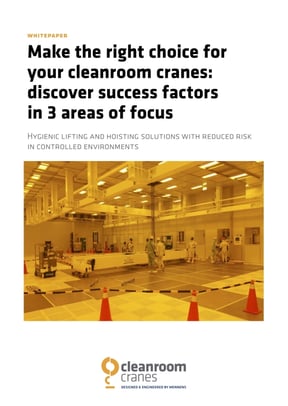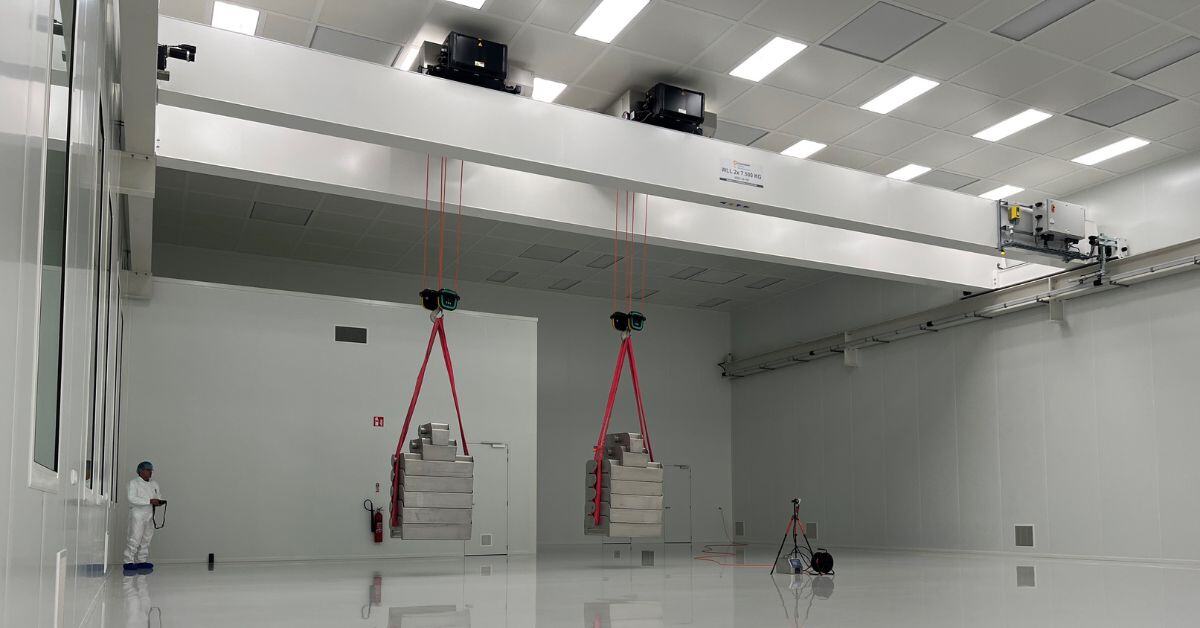Designing a cleanroom?
Don’t forget a cleanroom crane

Are you (re)designing a cleanroom and exploring cleanroom crane options?
Ensure you're well-prepared by downloading our whitepaper.
Discover the key success factors across three critical focus areas:
- Configuration of your lifting solutions
- Material and surface treatment
- Electric components
Just like designing a house
Cleanroom construction shares quite a few similarities with the construction of a house: it all starts with a design, in which wishes, possibilities and solutions are laid out on the table.
Every cleanroom is different and requires a tailor-made solution. Cleanroom cranes are an important part of many cleanrooms.
They can lift material and products that are otherwise too heavy to lift manually, and they do so with great precision and far less contamination than standard industrial cranes. Despite their importance, cleanroom cranes are often overlooked during the design phase.
And that is a missed opportunity. No matter the size of your cleanroom or the product you are manufacturing, considering your lifting and hoisting equipment during the earliest stages of designing and constructing your cleanroom is always beneficial. It is cost-effective, saves time, and helps to maximize the use of your cleanroom space.
Key elements of cleanroom design
A fundamental cleanroom design includes:
- Air filtration: Filters clean outside air to exclude fibers, dust, and other particles
- Air circulation: Inside the air is constantly filtered and circulated through the air. Filters remove contaminants that developed inside the cleanroom
- Climate control: Humidity and air temperature are being strictly controlled at all times
- Cleanroom lifting equipment: Cleanroom cranes and hoists designed to minimize contamination. You will save time and money as there will be no need for extra air filtration and cleaning.
- Controlled access: Staff enter and exit a cleanroom through airlocks or gray rooms wearing a special cleanroom suit.

Air contamination and your cleanroom design
The biggest source of contaminants in any industry is air. In order to minimize the amount of particles floating around, production processes are moved to a cleanroom.
The design of a cleanroom is completely aimed at controlling these airborne particles. The particles are periodically measured using particle counters which comply with ISO
21501-4 standards and meet the requirements of both 21 CFR part 11 and ISO14644 et GMP Annex 1.
To operate within the strict limits of the cleanroom's ISO cleanliness grade, you need lifting equipment designed specifically for cleanrooms. This ensures that your lifting solution will not disrupt the cleanroom environment by introducing unwanted contamination.
Why you should involve us from the start
Many companies realize too late that cleanroom cranes are a crucial part of their design. This leads to expensive modifications afterwards and inefficiency. Don’t hesitate to ask us your questions about our cleanroom cranes or our help in designing your cleanroom? Contact us on +31(0)88 425 83 00 or via the contact form. We're here to provide expert guidance and support.